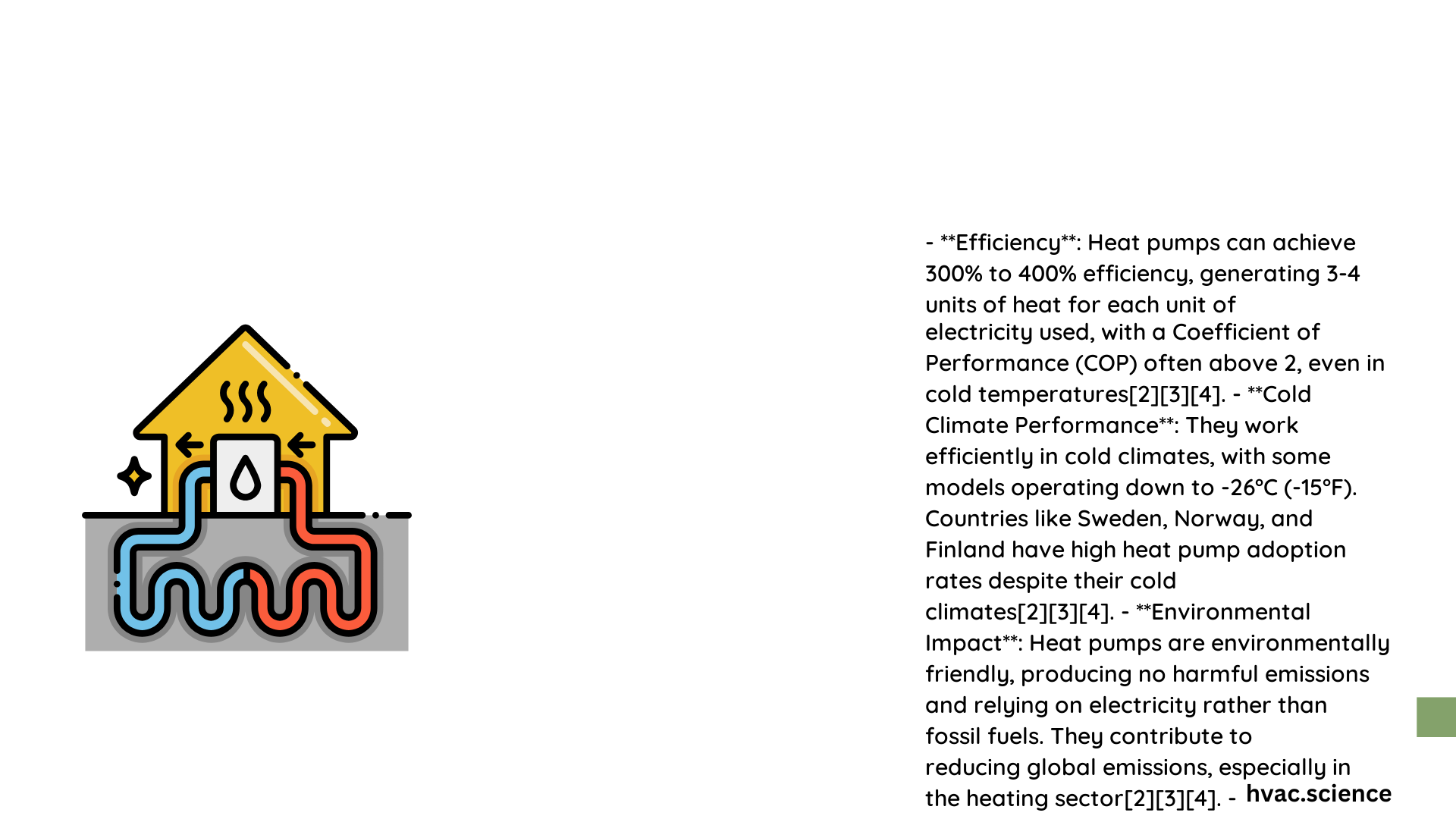Heat Pump Reality: Unveiling the Truth Behind Modern Heating Technology
Heat pumps represent a revolutionary approach to home heating and cooling, offering unprecedented energy efficiency and environmental sustainability. Despite widespread misconceptions, these systems provide reliable temperature control across diverse climates, with advanced technologies enabling remarkable performance even in extreme conditions. Understanding the nuanced reality of heat pump technology is crucial for homeowners seeking intelligent, cost-effective heating solutions.
What Makes Heat Pumps Truly Efficient?
Heat pumps operate on a fundamental principle of transferring thermal energy rather than generating heat directly. This mechanism allows them to achieve remarkable efficiency levels that traditional heating systems cannot match. Let’s explore the key performance metrics:
Coefficient of Performance (COP)
| COP Range | Performance Interpretation |
|---|---|
| 2.0 – 3.0 | Standard Efficiency |
| 3.0 – 4.0 | High Efficiency |
| 4.0+ | Premium Performance |
Key Efficiency Factors
- Temperature Transfer Mechanism: Extracts heat from external environment
- Electricity Consumption: Significantly lower than traditional heating systems
- Seasonal Adaptability: Modern units maintain performance across temperature variations
How Do Heat Pumps Perform in Different Climates?
Contrary to popular belief, contemporary heat pumps demonstrate remarkable versatility:
- Cold Climate Performance
- Advanced models operate efficiently down to -15°F
- Specialized cold-climate units maintain 100% heating capacity
-
Technological innovations like variable-speed compressors enhance adaptability
-
Warm Climate Efficiency
- Exceptional cooling performance
- Lower electricity consumption compared to traditional air conditioners
- Reduced carbon footprint
What Are the Real Installation Costs?
Heat pump installation costs vary based on multiple factors:
| Heat Pump Type | Average Installation Cost | Operational Efficiency |
|---|---|---|
| Air-Source | $3,000 – $10,000 | Good for moderate climates |
| Ground-Source | $10,000 – $30,000 | Highest overall efficiency |
| Hybrid | $4,000 – $12,000 | Flexible performance |
Can Heat Pumps Truly Save Money?
Long-Term Financial Benefits
- Energy Cost Reduction: 30-60% lower heating/cooling expenses
- Government Incentives: Federal tax credits up to $2,000
- Utility Rebates: Additional savings through local programs
What Maintenance Do Heat Pumps Require?
Essential Maintenance Checklist
- Monthly filter cleaning
- Quarterly external unit inspection
- Annual professional system evaluation
- Refrigerant level verification
- Electrical connection assessment
Emerging Technologies and Future Outlook
Heat pump technology continues evolving:
– Improved refrigerant compositions
– Enhanced compressor designs
– Smart integration with home energy management systems
– Increased renewable energy compatibility
Practical Recommendations
- Consult local HVAC professionals
- Assess your specific climate requirements
- Compare multiple heat pump models
- Consider long-term energy savings
- Explore available financial incentives
Conclusion
Heat pump reality transcends marketing claims, offering a scientifically proven, environmentally responsible heating and cooling solution. By understanding their true capabilities, homeowners can make informed decisions that balance performance, cost, and sustainability.

